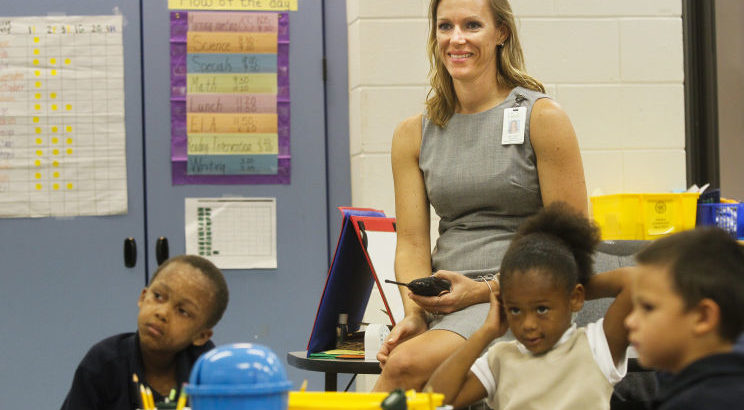It’s been nearly two years since the Tampa Bay Times published «Failure Factories,» the Pulitzer Prize-winning series focused on five struggling elementary schools in south St. Petersburg that were not provided the promised additional resources after they were resegregated. The series unleashed philosophical and political debates involving poverty and race, the responsibilities of parents and the government and the merits of public schools and privately operated schools. Yet there remains a simple truth that is too often minimized: Educating these children is hard, often heartbreaking work that occurs in the classroom without nearly enough public and financial support.
The Times’ Cara Fitzpatrick spent last year chronicling the progress and setbacks of the faculty and students at one of those five schools in the original series, Fairmount Park Elementary. Her reporting revealed real-life stories that rise above stereotypes and defy boilerplate solutions.
There was the perpetually upbeat principal who refused to surrender to low expectations. She deals with the same challenges facing high-poverty schools through the ages and the increased scrutiny of legislators who specialize in unintended consequences. The policies and legislation coming out of Tallahassee make experienced teachers wary of putting their job evaluations on the line in struggling schools, forcing principals to recruit straight off college campuses to fill spots in the most challenging classrooms.
There were the overextended parents who work multiple jobs and unconventional hours to keep the electricity on and food on the table. Parent meetings at Fairmount often were sparsely attended. But while lawmakers talk of parental responsibility, no child chooses to be born into a situation where money is tight and parental supervision is a challenge.
There were the teachers who volunteer to work in a more difficult setting, knowing their jobs are in greater jeopardy than most others due to the state’s fanaticism with standardized test scores and accountability. The stress and increased workload in struggling schools is so daunting that many experienced teachers are not swayed by a district’s offer of higher pay.
And there are the children. The few who misbehave, yes, but also the majority who are eager to learn. The ones who might get off to a slow start, then fall hopelessly between the cracks. The students so embarrassed by their shortcomings that they become adept at masking their weaknesses.
These are the stories everyone should remember. That includes legislators who are wedded to ideology and have little clue about the challenges in high-poverty schools. That includes teachers unions that too often protect their members at the expense of their students. That includes the rest of us who have no idea what life is like for an elementary student who comes to school in the morning with an empty belly and comes home in the afternoon to an empty house.
While the school grades for other elementaries in the original «Failure Factories» series improved, Fairmount Park dropped to an F despite the best efforts of the principal and her team. But the answer to narrowing the education gap will not be found in gimmicks or the state’s zealous pivot toward charter schools. It will require a sustained commitment of human and financial capital, and the willingness of school officials to tap into communities that stand ready to lend a hand. This is a societal challenge that deserves more thoughtful solutions than abandoning public education and handing the responsibility and public money over to privately run schools with less accountability.
From: http://education.einnews.com/article/391068005/g49GVhNMqt8gcau8?lcf=ZdFIsVy5FNL1d6BCqG9muZ1ThG_8NrDelJyazu0BSuo%3D







 Users Today : 22
Users Today : 22 Total Users : 35460375
Total Users : 35460375 Views Today : 30
Views Today : 30 Total views : 3419130
Total views : 3419130